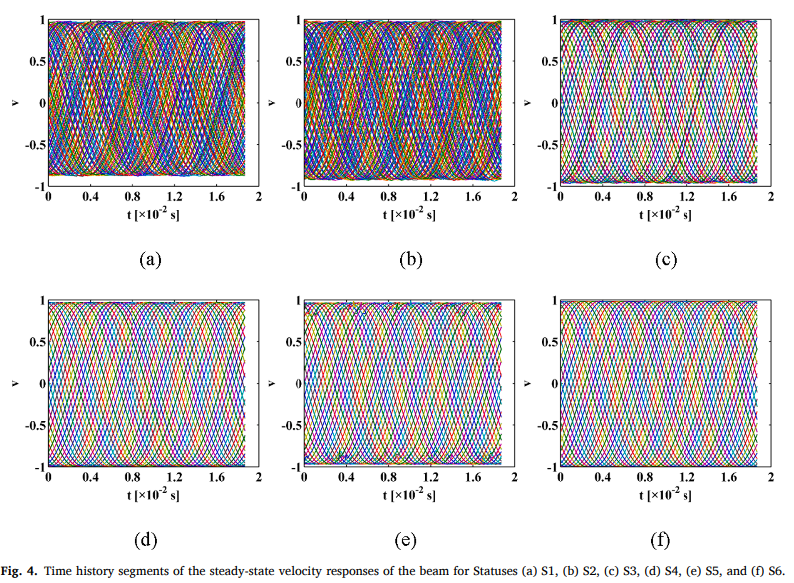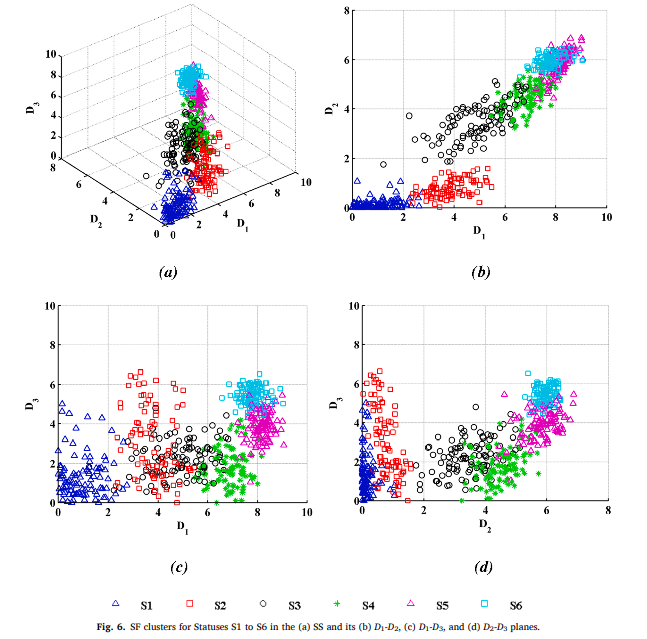A probabilistic approach for quantitative evaluation of fatigue cracks using nonlinear vibration responses
Fatigue cracks can cause nonlinearities in the vibration responses of cracked structural components. Nevertheless, there is a noticeable barrier to quantitatively evaluating the fatigue cracks using vibration responses owing to the difffculty in extracting crack-induced weak dynamic nonlinearities and quantifying probabilities of crack statuses. To overcome this barrier, this study proposes a probabilistic approach for quantitatively evaluating fatigue cracks. Crack-induced nonlinearities in the vibration responses are extracted by the singular spectrum analysis (SSA) and embodied in status features (SFs). The dispersed distributions of the SF clusters in the status space can visually characterize different crack statuses. In particular, the mechanism of the SSA for extracting crack-induced dynamic nonlinearities is interpreted in this study. In addition, the 3D probability density functions of the SFs are formed, based on which a status probability index is established to quantify the relative probabilities of different known crack statuses. Hereby, the statuses of fatigue cracks can be quantiffed in a probabilistic manner. The approach is experimentally validated on a steel cantilever beam that bears a fatigue crack, attached to which an electromagnetic shaker is used to generate transverse harmonic excitations. The excitation amplitudes are increased to produce increasing open extents of the fatigue crack. Simultaneously, steady-state velocity responses are acquired from the free end of the beam through non-contact measurement using a Doppler laser vibrometer. The results reveal that the crack statuses corresponding to different open extents are visually characterized and their relative probabilities are quantiffed.



10.1016/j.engfracmech.2023.109127